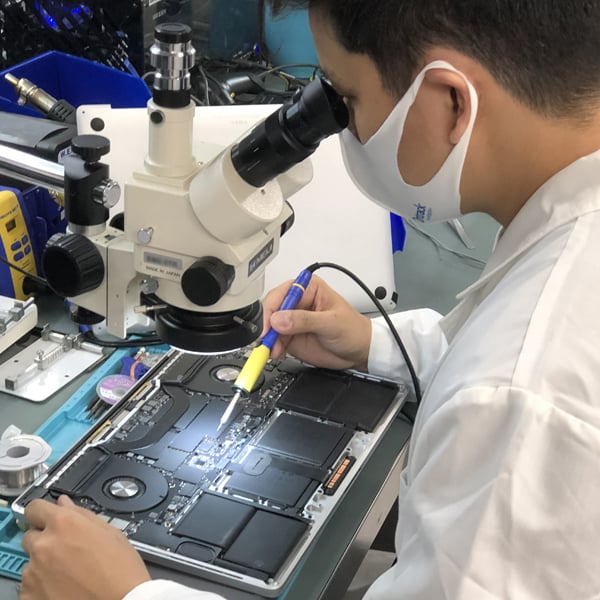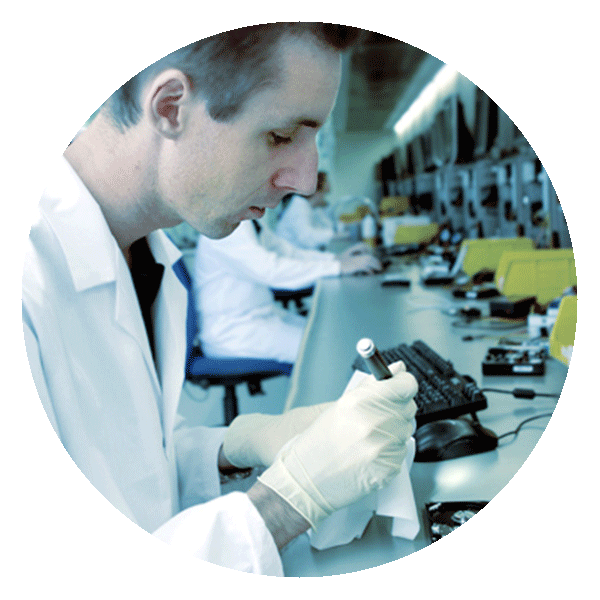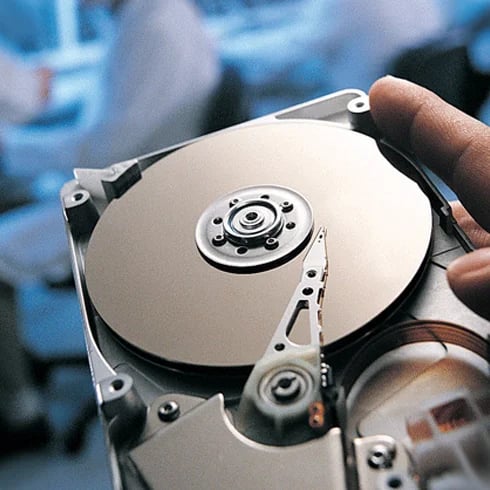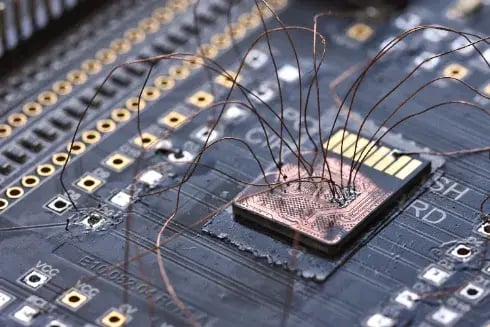A closer look at the different steps of the data recovery process
Step 2: Data recovery evaluation and analysis
In Ontrack’s advanced laboratory skilled data recovery engineers perform an in-depth evaluation for the extent of the damage and evaluate the recoverability of the data. Using state-of-the-art tools and techniques.
Clean room lab
A clean room is the main department of every company providing professional data recovery services. It is a professional workshop, consisting of specialised hardware and software equipment. Other items of great importance are more ordinary, such as tables, chairs, shelves, special containers, tools, and even the floor covered with a suitable material. It is necessary to ensure that the highest level of air quality is maintained. The standard environment for working on opened hard drives is classified as 'Class 100' in terms of the air quality.

Fully equipped clean rooms have a stereoscopic microscope, soldering station and a clean room bench. Stereo microscopes help the engineers to work on smaller and smaller hard drive components as well as on other storage media. Every time data loss is caused by physical damage the data recovery engineer must work on the internal parts of the hard drive.

ESD protection is another key element that has to be taken into consideration in order to achieve the highest level of efficiency and safety. This is because an uncontrolled electrical discharge can cause damage to the electronic components within a computer system, including the electronic parts of a hard drive. To avoid this, ESD-protected equipment and dielectric materials are used, which include specialist workbenches, storage bins, hand tools and anti-static aprons.
Step 3: Advanced Data Recovery Techniques Client Approval and Transparency
With the client’s approval, Ontrack’s data recovery engineers begin the meticulous process of retrieving the lost data. Depending on the type of damage and the complexity of the recovery, this phase may involve hardware repairs, software fixes, or a combination of both. Ontrack’s team uses specialized equipment and proprietary tools to extract data from even the most severely damaged devices. Different types of media failures (physical or logical) require different recovery approaches.
Logical damage
When logical damage occurs, specialised software is required. This software reads the content of the drive and repairs any structural errors which lead to data loss. Reasons for logical data loss:
- Damaged or unreadable master boot record (MBR)
- Deleted partition or partition table
- Reinstallation of the operating system (no backup)
- Restoration of the factory settings (no backup)
- Damaged or missing file system
- Deleted files
- Formatted drive
- Damaged raid controller (losing raid configuration) Physical damage
In the case of physical damage, the situation is much more complicated. Recovering data from failed drives must be performed in a sterile environment. Drives can then safely be disassembled, tested, and fixed. Failed components must be replaced with matching and fully working spare elements from a donor drive.

Donor drives sometimes need to be matched by type, model, and production date. Physical damage to the platters forces the engineer to focus the recovery efforts on the undamaged parts of the platter. Such recovery usually uses up more than one set of donor drives and might extend the recovery time.

Sometimes chips from the original drive need to be desoldered and moved to the donor drive. For getting access to data on SSD’s a chip off recovery, where the data chips are removed from the device, mayalso be required.

Memory cards sometimes end up looking like a ‘bad hair day’.

After the physical recovery process is complete and the RAW data is secured, it is usually necessary to fix the logical structures as well. This process can be seen as similar to putting together a jigsaw puzzle (actually, a more arduous process, given that the pieces in no way resemble the whole data set that we want to recreate). Our Norwegian colleagues compare this to trying to rescue a book without the table of contents, no page numbers and missing pages, after the pages have been thrown from a ski jump tower.

Step 4: Secure Data Delivery
After all the data recovery processes are complete, the data needs to be prepared before being shipped back to the customer. The files are copied abd then provided to the client on a brand new encrypted external hard drive. This ensures that the data is returned in a secure and convenient manner, safeguarding against any potential security risks.
Conclusion
Ontrack Data Recovery combines advanced technology, expert knowledge, and a customer-centric approach to deliver top-notch data recovery services. Our comprehensive process ensures that clients receive the best possible outcome, turning the distress of data loss into a story of recovery and restoration. Whether it is personal data or critical business information, Ontrack is dedicated to salvaging lost data and providing peace of mind to ourclients.
By choosing Ontrack Data Recovery, you are opting for a reliable and efficient solution to retrieve your lost data, ensuring your valuable information is back where it belongs. Trust Ontrack to handle your data recovery needs with expertise and care.
More about our Ontrack data recovery services


 United States | English
United States | English
 Locations
Locations
 Search
Search













